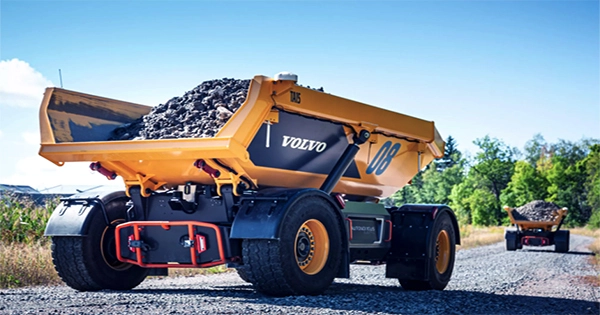Steel can be found in many places. It can be found in our cars, our homes, our bridges, and a variety of other places. Steel, despite being a valuable commodity for cultures all over the world, has a significant global carbon footprint, accounting for up to 7% of global carbon dioxide emissions. These emissions were pumped out at various stages of the steel-making process, which remained mostly unchanged for over a thousand years — until now. SSAB, a Swedish steel firm, has teamed up with LKAB, a mining company, and Vattenfall, an energy company, to rethink the steel-making process so that it is fossil-free from start to end.
SSAB’s HYBRIT initiative employs the technology to generate a product that is the same as before – durable and adaptable steel. However, using a new method that does not emit carbon dioxide significantly reduces global carbon emissions. This groundbreaking effort has already proved its potential by producing the world’s first fossil-free vehicle, but that is just the beginning: the possibilities of fossil-free steel range from boats to buildings.
“The steel industry can’t keep emitting large volumes of CO2,” says Eva Petursson, SSAB’s Executive Vice President Research & Innovation. “As part of our objective to become fully fossil-free by 2045, we’re addressing the core cause of the emissions.” She says, “SSAB is already one of the world’s most CO2-efficient steel companies.” “However, we’d like to do more.”
Steel is a fantastically strong iron-carbon alloy. Iron must separate from oxygen and contaminants, and a little amount of carbon must add to produce it. This is a high-energy process in which coal and coke are deposited in a blast furnace and heated to extreme temperatures in order to eliminate oxygen from iron ore. The original iron ore for the HYBRIT process was mined without the use of fossil fuels. Then, instead of coal and coke, hydrogen gas generated from the electrolysis of water using power from a fossil-free source will be used to convert iron ore to iron. Solid iron (sponge iron) melted down in an electric arc furnace once it was manufactured. At this point, the sole by-product is water, not carbon dioxide. Steel made without the use of fossil fuels created.
To demonstrate the potential of its product, SSAB teamed up with Volvo to create the world’s first fossil-free steel vehicle, a dumper that could use in mining and quarrying. SSAB is now fine-tuning this new process for producing fossil-free steel, lowering prices, and scaling up to mass production in order to assist other industries in reducing their carbon footprints. The HYBRIT partnership has opened a pilot plant in the northern Swedish city of Lule to produce fossil-free sponge iron, which is produced by reducing iron oxide in the form of iron ore. In addition, they hope to establish a demonstration facility in Gällivare in 2026, with the goal of generating 1.3 million tonnes of fossil-free sponge iron.
Importantly, fossil-free steel retains the same quality and qualities as conventional steel, allowing it to utilize for the same applications as traditional steel. Fossil-free steel is arrived, and it has the potential to transform a wide range of businesses throughout the world. “The beauty is that there are no drawbacks,” Petursson explains. “When available in bigger quantities, fossil-free steel can be utilized in all of the same products as conventional steel, but with virtually no environmental impact.”
















